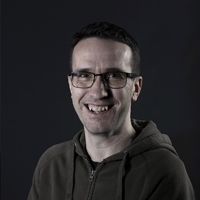About Us

Our Story
It all started with a takeaway curry back in 2008, when brothers-in-law, Mark and Simon, ended up discussing recent developments in rendering and the need for real-time lighting creation during their meal. The need for interactive HDRI maps was agreed. A few weeks later, Simon emailed Mark a basic software program which allowed a single light to be moved around the HDR canvas, applying lat-long distortions in real-time. The foundation for HDR Light Studio was set.
The lighting software was developed further for both fun and for Mark to use on his 3D projects. However, in February 2009, HDR Light Studio was released for sale to the public. It quickly gained a following in the 3D industry, with customers ranging from individual 3D artists to major automotive and product manufacturers. As Lightmap looks toward its next decade, its goal of providing the most advanced tool on the market for live HDRI map authoring and editing remains, as does its commitment to its users.
You can read our full company history here.
Mark Segasby - Co-Founder

A few words about me and my background as a 3D Designer/Visualizer
As a boy, I went to my dad’s small graphic design studio after school to help out. Dad got some of the first Apple Mac computers in the UK with Adobe Illustrator 88 and Photoshop 1. I developed a passion for using computers for my creative design work. I loved how precise and perfectly I could make my designs, and the experimentation software tools allowed. I went on to study 3D Product Design at University where I learned to use 3ds Max Release 4 to model and render many of my 3D designs. I was very lucky to have my own Pentium 90 PC and a legit copy of 3ds Max. I fell in love with 3D computer graphics.
Once I graduated, I taught students how to render products old style, using pens and pencils. I also taught myself how to model and render using Alias software, which was a dream of mine for years before this. It cost so much that I had to choose between paying for training and not owning a license, or buy a license and use the manual to train myself. So I trained myself and owned my license, which cost a fortune via a big bank loan. My Alias skills helped me to land my dream job as a product designer at Priestman Goode where I worked hard on many rewarding design projects. I look back fondly on my time working in London. After this, I set up in business for myself and learned Maya for Visualization and SolidWorks for product modelling.
I loved product visualization and invested heavily in a specialist renderer using custom hardware called RenderDrives (by ArtVPS) which were compatible with Maya. These computers used patented raytracing processors and were way ahead of their time – they produced stunning fully ray-traced images. I produced photo-real images as close to photography as I could and learned a lot about materials and lighting during this time. I like to think that for the time my renderings were pretty good, and I hope they still look good today.
Then came our HDR Light Studio adventure – looking back writing this bio, it feels like it was meant to be. I now love using my design skills to develop lighting tools that I would want to use too. I care about what the software looks like, how it functions and its usability. I understand the challenges our customers face as I have been a 3D artist myself. The best part of my job is seeing the imagery our customers create with the help of HDR Light Studio. Even though I don’t make 3D imagery myself nowadays for a living, there’s a tiny part of me in those customer images via HDR Light Studio.
Connect with me on linkedin here
Simon C. Smith - Co-Founder

A few words about me and my background as a Software Developer
As a boy, I would play games on my dad’s BBC computer and tinker with Basic - copying lines of code from Input magazine and creating games of my own. My first computer was an Amiga 1200 and I used to love following the demo scene, where coders would show off their skills by producing amazing computer graphics and visuals perfectly choreographed to a thumping soundtrack. The graphics were way ahead of what you would see in games, and they really pushed what the hardware could do. I wanted to learn how to do that. After gaining my initial Masters in Astrophysics, I went on to study for a Masters in Information Technology to begin my professional career as a software developer.
My first job was coding accounting software, but I yearned for something more creative, so spent all my spare time for 2 years learning the craft of writing computer games. I finally landed a job in the games industry working through Rage Games, Dangerous Games, Acclaim Studios, Pivotal Games and finally Sony. I've worked on audio tools, particle effects systems, and code optimisations to name a few. I loved it all - the best job in the world.
It was during my time at Sony that I began working with Mark on HDR Light Studio. I’d never run my own business before and it was a big leap into the unknown setting up Lightmap and leaving what was my dream job at Sony, but I don't regret my decision. The new challenges and rewards working with such diverse industries that Lightmap is involved with are more than enough.
Can we help you?
Thank You
A big thank you to our partners over the last 15 years that have worked with us to ensure HDR Light Studio compatibility.

HDR Light Studio depends on the 3D software and renderers that produce the final imagery. We stand on the shoulders of these giants.

